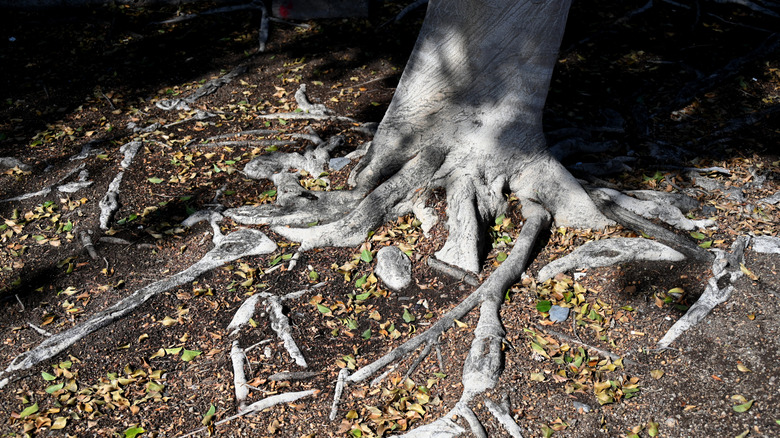Fill In Shady Areas Under A Tree With A Living Mulch That's Low Maintenance
If you're tired of the expense and effort of adding mulch year after year beneath your shady trees, why not try a ground cover that can work as a living mulch? Consider the hardy and fast-growing pachysandra (Pachysandra terminalis) also known as carpet box, which can thrive in shady areas beneath trees all while helping improve the soil.
First of all, what's living mulch? It's a kind of evergreen ground cover that can help provide some of the same benefits of mulch, like reducing soil erosion and hindering the growth of weeds. Living mulches like pachysandra and other kinds of ground cover can improve soil, as well, which will help your trees and other plants grow. This kind of living mulch can also attract pollinators like bees to the garden, which is an added benefit.
There are many varieties of pachysandra, including green carpet, known for its waxy, oblong leaves. Native to Japan and China, pachysandra is an evergreen herbaceous perennial that will thrive in areas of deep shade, where it gets two hours or less of direct light. In fact, its leaves can be damaged by too much direct sun. This makes it perfect for the base of trees where deep shade can often hinder the growth of other kinds of plants. It thrives in USDA Plant Hardiness Zones 4 through 9. Be warned, however, that it is sometimes considered an invasive plant in certain regions.
Plant pachysandra in these easy steps
If you want to know how to plant pachysandra, you can do so in a few easy steps. Pick a shady spot with acidic soil. This actually makes it a perfect candidate to plant under and around pine trees, which normally flourish in acidic conditions that don't lend themselves to grow much else. Pachysandra prefers highly organic soil, but it'll also tolerate clay or silt. They should be planted about 6 to 12 inches apart. Keep in mind, this ground cover likely will take a few years to truly take hold. At maturity, it grows between 6 and 12 inches tall.
There are certain pachysandra diseases to note. The plant is susceptible to leaf blight and root rot, so it's a good idea to not to let it sit in poorly drained, water-logged soil and to make sure the plants aren't too densely crowded together. It's fairly drought tolerant, but should be watered regularly during dry spells. In general, however, the plant is very hardy and low maintenance and will flourish with little effort, which is why it's such a great choice to plant under a shady treetop.
Of course in a few regions of the U.S., the plant is so common (or so invasive) that it's lost favor among some, even as an easy ground cover to grow beneath trees. It can spread quickly, so make sure that the area where you plant pachysandra is contained by garden edges, pathways or other natural barriers. It's an aggressive grower in certain conditions, so it's a good idea to plant it in contained areas and not to let it spread.

